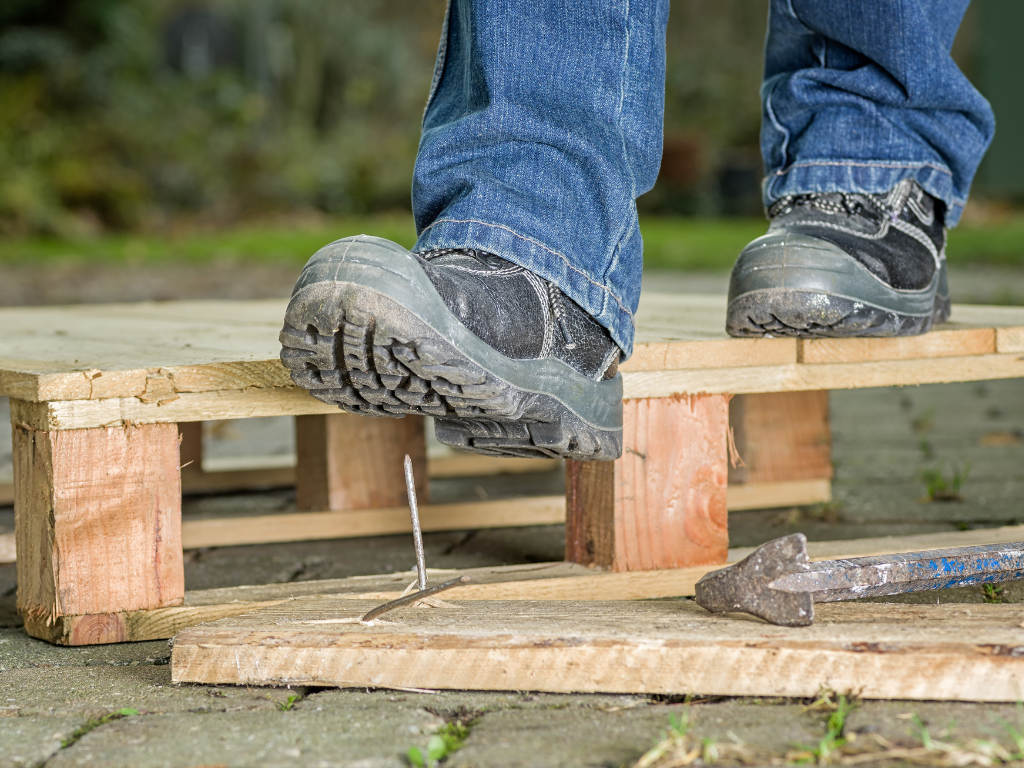Protective footwear is an essential element of personal protective equipment (PPE) that plays a critical role in ensuring workplace safety equipment across various industries. From construction sites to manufacturing floors, the proper footwear can mean the difference between a regular workday and an accident with serious consequences. Protective shoes and boots are specifically designed to shield workers from a wide array of hazards such as falling objects, sharp implements, molten metal splashes, chemical spills, and electrical hazards.

The design and materials of safety footwear are selected to mitigate risks specific to different work environments. For instance, sturdy materials like leather provide a barrier against punctures, while rubber soles offer resistance to electric shocks and slips. The implementation of safety footwear not only safeguards the well-being of employees but also promotes a culture of safety within the workplace, leading to reduced accidents and enhanced productivity.
Understanding the Protection Provided by Safety Footwear
In industrial settings, the risk of foot injuries is significant, and the repercussions can be severe, ranging from minor cuts and abrasions to more serious fractures, punctures, and crush injuries. Safety footwear is designed to combat these risks with features like steel toe caps, which offer protection against impact and compression, significantly reducing the severity of injuries from heavy falling or rolling objects.
Another key feature is anti-slip soles, which are crucial for preventing falls, a leading cause of workplace injuries. These soles provide traction on slippery surfaces, helping to maintain balance and stability. Additional safety equipments can include water-resistant materials to prevent liquid penetration and insulated linings to protect against extreme temperatures. Collectively, these features form the first line of defense against workplace hazards, ensuring that workers’ feet are well-protected under harsh conditions.
Different Types of Safety Footwear
The distinctions between various types of safety footwear—shoes, boots, trainers, and more—are not just in their appearance but in their functionality and suitability for specific tasks. Safety shoes, often resembling casual footwear, can be the preferred choice for indoor settings where the risk level is moderate, whereas safety boots, which typically offer a higher degree of protection with features like reinforced toecaps and midsole plates, are essential for more hazardous environments.
Specialized footwear options are developed to address unique risks associated with specific industries. For example, electrically resistant boots are essential for electricians, while workers handling chemicals may require boots with acid-resistant soles. The specialized footwear is not only about defense against obvious risks but also about comfort and ergonomic support, which are vital for workers who spend long hours on their feet.
Selecting the Right Safety Footwear

When selecting the right safety footwear for your workforce, a comprehensive evaluation of workplace risks is paramount. Conducting a risk assessment helps determine the types of hazards employees may encounter, allowing you to choose footwear with the appropriate protective features. Whether it’s anti-puncture soles, chemical-resistant materials, or electric shock-resistant insulation, each feature serves a specific purpose.
Moreover, the importance of a proper fit cannot be overstated. Ill-fitting shoes can cause discomfort, impair mobility, and even lead to long-term musculoskeletal issues. Ensure that employees are professionally measured and fitted for their footwear and understand the significance of selecting the right size for both safety and comfort.
Care and Maintenance of Safety Footwear
Proper care and maintenance of safety footwear are essential to retain their protective properties. Establish a daily routine for workers to inspect their shoes for signs of wear, damage, or contamination. Look for compromised soles, damaged toe caps, or weakened seams. Regular cleaning according to the manufacturer’s instructions helps to preserve the materials and maintain the footwear’s integrity.
Understanding when to replace safety footwear is just as crucial as its daily upkeep. Signs such as worn-down soles, visible damage, or loss of structural support are clear indicators that footwear should be replaced. Encourage employees to report any issues with their footwear, ensuring that protective gear is always up to the task.
Training and Awareness Programs for Safety Footwear
To ensure that safety footwear provides the intended protection, effective training and awareness programs are essential. Workers should be educated on the proper selection, fitting, use, and maintenance of their footwear. Training sessions can demonstrate how to correctly put on, fasten, and remove safety boots or shoes, as well as how to check for signs of wear and damage. Furthermore, workers should be made aware of the risks of not using or improperly using protective footwear.
Cultivating a safety-first culture within the workplace can significantly enhance compliance with safety gear usage. When employees understand the rationale behind safety protocols and are actively involved in safety discussions, they are more likely to adhere to safety guidelines consistently. Regular safety meetings, visible instructional signage, and a clear communication channel for addressing safety concerns can help foster such a culture.
Innovations and Future Trends in Safety Footwear
The field of safety footwear is ever-evolving, with new materials and technologies continually emerging. Recent innovations include the use of lightweight composite materials for toe protection, which offer similar protection to steel but without the bulk and thermal conductivity. Advanced textiles and breathable fabrics are being integrated to enhance comfort without compromising safety.
The future of safety footwear is poised to see even more exciting developments. Smart technology integration, such as embedded sensors that can alert wearers to hazardous conditions or wear-level indicators that signal when replacement is needed, are on the horizon. As industry standards evolve to keep pace with these advancements, safety footwear will continue to become more sophisticated, offering better protection and greater comfort for workers.
Conclusion
Protective footwear stands as an indispensable component of industrial safety, serving as a fundamental barrier against a myriad of workplace hazards. The selection, care, and use of safety footwear are critical in preventing injuries, and a proactive approach to training and awareness is key to ensuring its effectiveness. The advancements in safety footwear not only reflect the progress in protective gear but also underscore the ongoing dedication to fostering safer work environments.
